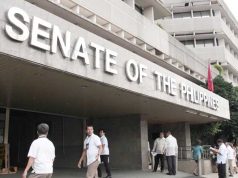Fourth quarter finds Filipinos less bullish
FILIPINOS remained optimistic this quarter, although confidence slid for the second time this year as concerns about higher prices and expenses as well as peace and order ate into bullishness on expected additional family income, higher salary and availability of more jobs, the central bank said in its latest survey.
The Fourth-Quarter 2017 Consumer Expectations Survey, conducted among 5,410 households last Oct. 2-14, yielded a 9.5% current-quarter reading that was the lowest in three quarters though it was better than the year-ago 9.2%.
“This means that the optimists continued to outnumber the pessimists but the margin for the current quarter was slightly lower relative to (10.2%) a quarter ago,” according to a summary of survey findings uploaded on the Web site of the Bangko Sentral ng Pilipinas (BSP).
The readings were similar for the “next three months” — which was hardly changed at 17.5% from the third quarter’s 17.8% and down from the year-ago 18.8% — and for the “next 12 months” — which went down to 32.0% from the third quarter’s 33.7% and the year-ago 33.4%.
The overall consumer confidence index is computed as the average of the three indices, namely:
• economic condition, which refers to the perception of respondents regarding the general economic condition of the country;
• family financial situation that refers to the level of household income in cash as well as in kind, savings, outstanding debts, investments and assets;
• and family income, consisting of primary income and receipts from other sources received by all family members like transfers, pensions and grants.
In a press conference at the central bank head office in Manila on Friday, BSP Deputy Governor Diwa C. Guinigundo said the fourth-quarter survey results were not unexpected. “The fourth quarter continued the less optimistic trend that was noted in the third quarter relative to the second quarter of the year. That is something that is not unique for 2017. It happened before, and it can happen in the future,” Mr. Guinigundo said.
“For Q4 2017, consumer sentiment on the three indicators was mixed, as optimism was lower on the country’s economic condition, steady on the family’s financial situation and higher on family income,” the summary read.
“For the next quarter (Q1 2018), consumers’ views on family finances and income turned more buoyant but that on the country’s economic condition weakened. The same broad trends were observed for the year ahead.”
HOUSEHOLD SPENDING TO REMAIN STRONG
In a sign that overall economic growth will continue to be supported by strong household consumption, which contributes more than three-fifths to gross domestic product, spending on basic goods and services is expected to rise next quarter — 34.9% from the third quarter’s 28.1% reading — with the more upbeat outlook “observed across all commodity groups and geographical areas…”
The percentage of households that considered the current quarter as a good time to buy big-ticket items like houses and cars increased to 31.9% from 30.2% the preceding quarter.
For the year ahead, buying intentions of respondents across all big-ticket items similarly improved to 12.7% from 11.2%.
This, even as the same survey showed respondents expecting inflation, interest and unemployment rates to rise and the exchange rate to deteriorate for the year ahead. — Karl Angelo N. Vidal



